Each month, Bob profiles an exceptional mobile photographer currently producing notable work across a variety of subjects and employing a broad range of techniques. Some will be well known within the mobile photography world (exhibiting and selling their work), and others will be gifted aficionados of the craft who shoot for themselves and their friends.
This month, Bob profiles Chris Harland – an English amateur iPhone photographer who captures expansive West Yorkshire and Scottish landscapes that are self-consciously reminiscent of the works of painters like Turner and Constable. In responding to a recent comment regarding the perfection of his color palette in a particular image, Harland replied with characteristic modesty: “I do work the colours a little, but I hope only to make the most of what nature herself provided. If you stood here it would look, and feel familiar, only a million times better.”
BW: Tell us about your background.
CH: I’m 52 and I live in Guiseley, West Yorkshire – and have lived in West Yorkshire since birth. I’d never picked up a camera with a degree of seriousness until 2010, when I was given an iPhone 3, and began to experiment with ‘instant photo’ applications, and started to sense the potential of ‘Mobile Photography’ as a way to express my complex feelings about the landscape around me, which had always held such a reverential place in my thoughts.
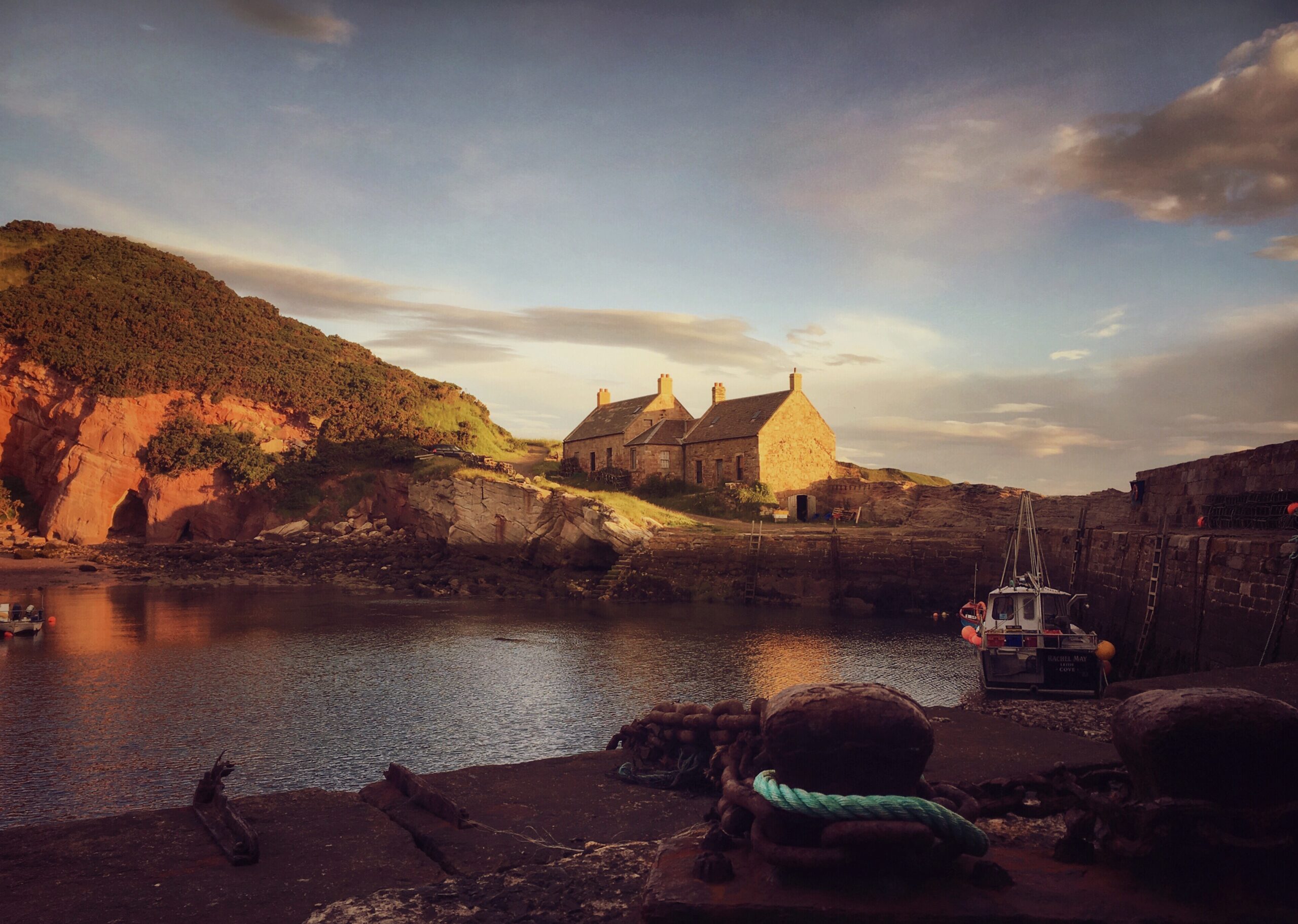
I became aware of Cove Harbour when researching a trip to East Lothian, and was instantly struck with its timeless charm. It’s very well photographed and has been used as a film location, the last being a fleeting appearance in the Avengers ‘Endgame’ when it’s seen as the house the grieving Thor resides in. Nearby St. Abbs harbour is also used in the film. For once, this was a plan perfect in execution, the weather keeping true to its forecast and rewarding me with a luscious morning to make this image. And about a mile behind those fishing cottages? A nuclear power plant.
BW: When you’re not pursuing your photography, what else do you do?
CH: I’ve been a semi-professional singer and songwriter for about 35 years, and between those two pursuits and my family, that’s really about it. Not being a very social person, I very much prefer to keep myself to myself, despite the contrary nature of standing on a stage and singing!
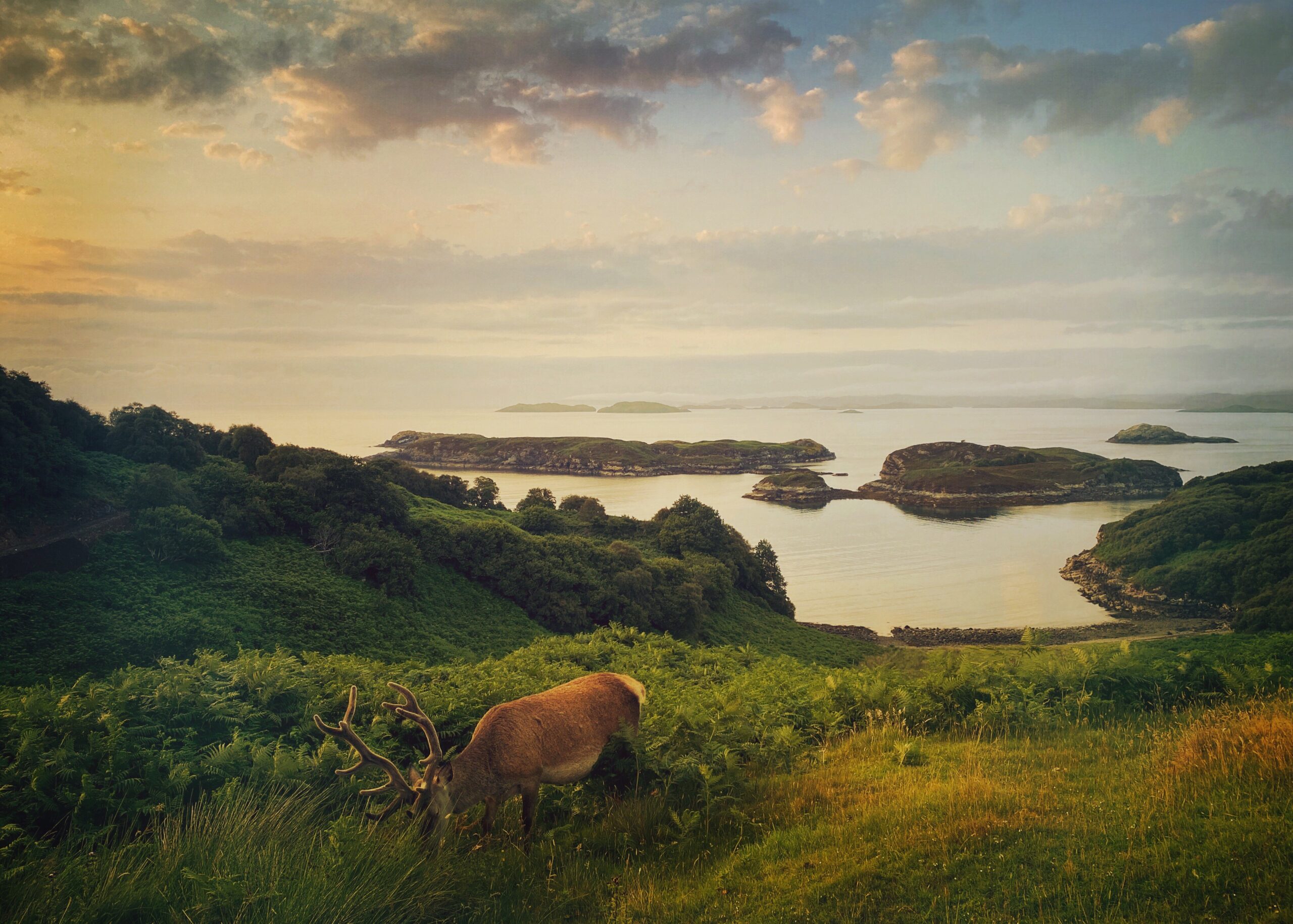
Evidence of the highly changeable nature of the weather in this area of Scotland. This three-day trip was blighted by absolutely miserable weather, with almost wall to wall low cloud and near zero visibility. On my last evening, the sky began to clear and open up a lovely sunset. I took the short walk from my hotel to this famous ‘viewpoint’ to simple drink in the end of the day. I’d begun to take a few frames, then noticed a pair of antlers appear. I exercised some patience, and kept in view, and eventually this stag came very, very close to me, presenting me with the perfect subject with which to frame the glorious evening, right out of an Aelbert Cuyp painting. Impossible to predict.
BW: What inspires you?
CH: In a photographic sense, the beauty of nature, expressed in the landscape as a whole. The sense of joy, of release, of awe and exultation I can feel when alone in the landscape is an experience I’m unable to replicate in almost any other situation. Quite simply, any picture I make is a pale attempt to pass that feeling on to the viewer.
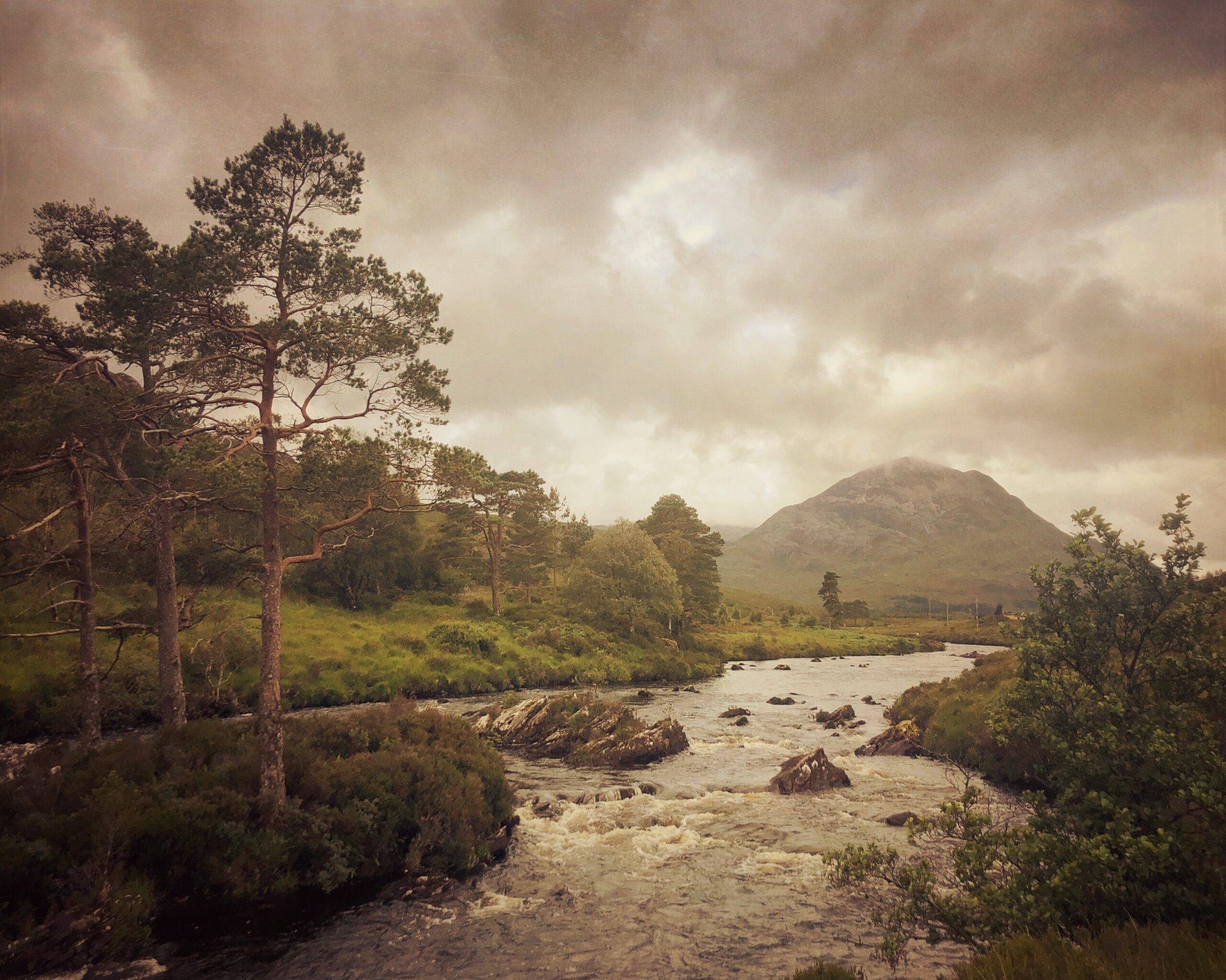
Never an image I’ve particularly loved, but an example of how nature can arrange things in such a way as to make composition easy for the image maker. As far as I can see everything in this image points the eye to the distant mountain, which technically could be called the subject. For me, however it was always the tree on the little island in the River Carron. Glen Torridon is without doubt one of the most beautiful in the whole of Scotland – and therefore the world, yet I’ve had little success there generally (other than a wonderful encounter with a young stag). It’s my intention to return soon, perhaps in winter, to see if I can make a better job, I have two or three specific locations in mind.
BW: How do you express your creativity?
CH: Songwriting was always my creative outlet, from about ’86 until 2011, when my son was born and I took a protracted break. This is when and where making pictures stepped in, and totally filled the creative void. I was truly obsessed with making pictures for a solid 6 years, until I decided to pick my music making back up, and now there is a balance between the two, albeit leaning towards making music and this is so much more an ‘every day’ process. Landscape takes time – to plan, to travel, to work the images.
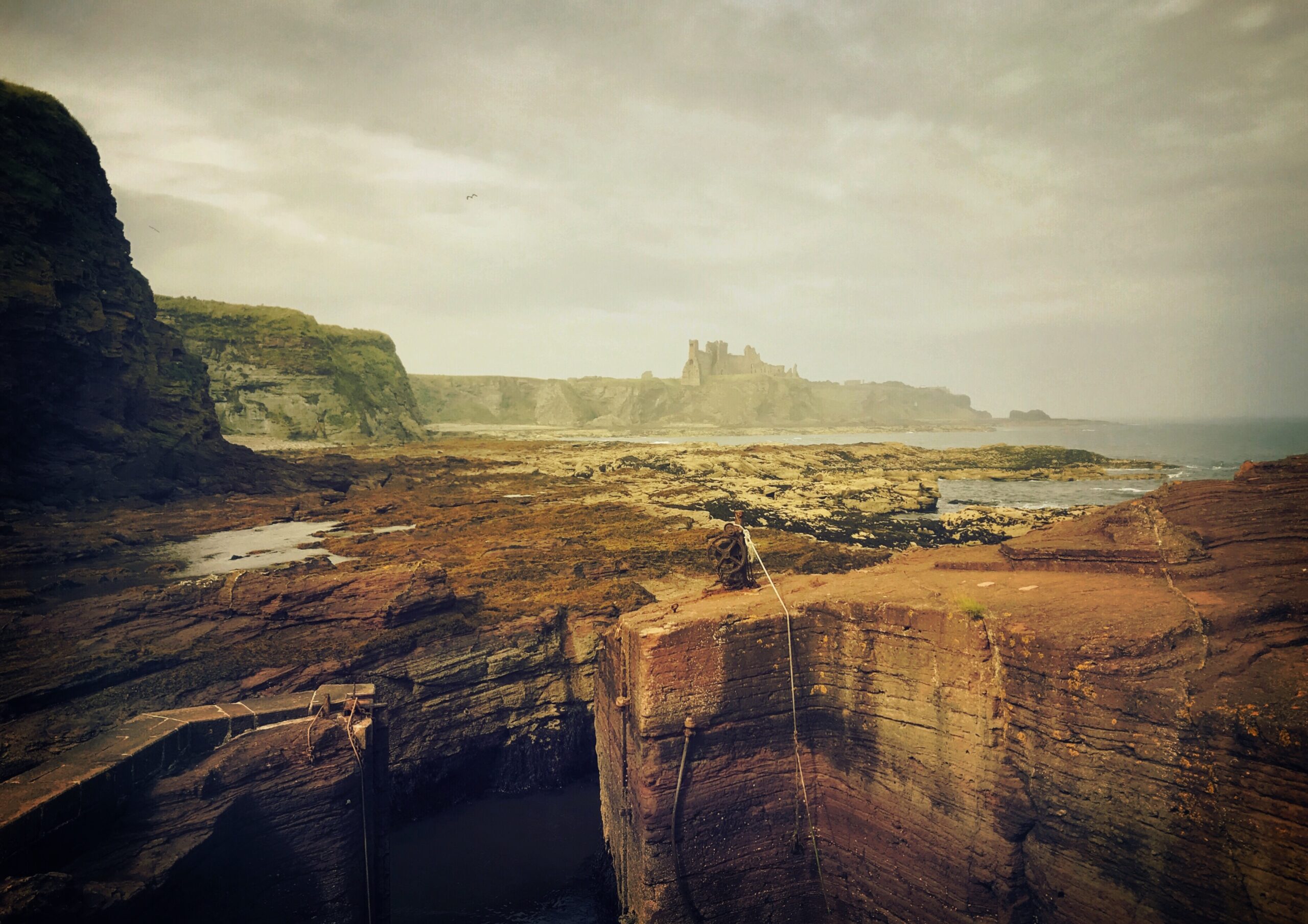
A prime example of the fruits of research. I had no idea Seacliff harbour existed (it is, after all, reputedly the smallest harbor in the UK, having berths for 2 small boats) and even less its incomparable relationship to Tantallon castle in this view.
Only by poring over Ordnance Survey maps of the area, during a planning session for a trip to Lothian did I find this odd anomaly and investigate further. Seacliff is a hidden gem, with a beautiful sandy, crescent beach, the tiny Harbour – and this stunning view of the Castle. When I first rounded the corner and came across the view, I literally stood still for a good half hour, drinking it in. Quite honestly, it’s as if taken from a fairy tale illustration. On going back to this spot with my 6-year-old son recently, I had no problem whatsoever in convincing him that a dragon (flying over from its perch on The Bass Rock, nearby) had destroyed the castle in a surprise attack.
BW: Are there any specific artists who have an influence on your work?
CH: As someone who might be loosely defined as a ‘photographer’ – landscape photography on the whole leaves me a little cold, with the exception of one photographer – Fay Godwin, who’s collection ‘Land’ from the early 80’s I bought as a very young man after watching a South Bank Show feature on her work. She worked almost exclusively in Black and White, and is firmly in the ‘photography’ bracket, but – to me – her work has a soulful quality that I just can’t seem to find in many others. Having thumbed through ‘Land’ for about 30 years it was no surprise to me that when I started making pictures it was Godwin’s language that I wanted to speak, albeit in my own fashion and with my own accent.
Other than Fay Godwin, pretty much all of my influence comes from the great landscape painters: Van Ruisdael, Cuyp, Corot, Turner, Constable, Girtin, Cotman – these are my great inspirations, and when I’m planning to make a picture, or sitting down to ‘work’ a basic image – it’s these giants that inform so many of my choices, these and so many more. And it’s not that I’m trying to perform a trick – see how I can make a picture look like a painting – but more that I am trying to show that the landscape that moved and inspired those great artists still exists today, and we only need to view it and attempt to express it emotionally, rather than technically. Look at ‘Norham Castle, Sunrise’ by Turner – he isn’t wanting to make a pictorial record of a Castle at Sunrise, he is trying to say something about that experience, to convey whatever emotions that place and moment stirred in him. And having stood in front of that picture myself for a great deal of time, and fully felt its emotional impact, I can recognize his genius because he succeeded. In my own small way, I wish to do the same with each image I make.
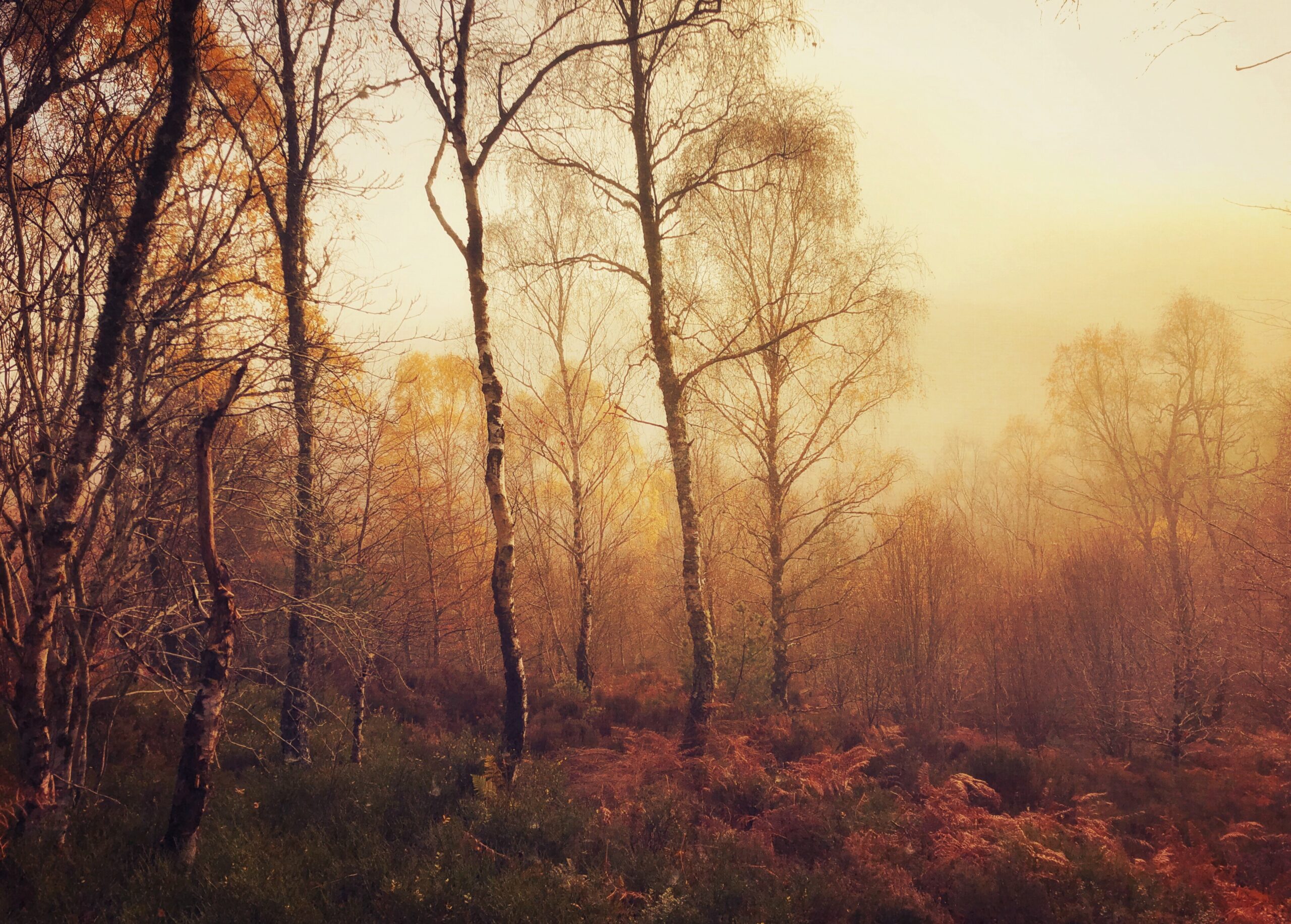
Taken about 5 minutes before my image of the Falls themselves, but in real terms this could be anywhere, and is an example of landscape-as-abstract. The rich yellow and reds are again a tribute to the Dutch Master landscapists of the 17th century. It does also teach that, if the conditions are such almost any frame has a chance of ‘making it’ . I say this as I walked past this exact spot about a year ago, on a clear, sunny, summer day and found it hard to believe I’d ever made an image from such a ‘nondescript’ spot –with all due respect to the area which is lovely. I’ve made other such images, where in the sublimity of the conditions have more than compensated for the paucity of the subject, but this is perhaps the most successful.
BW: What are you trying to communicate with your work?
CH: I think some of that I might have answered in the previous question. In short, emotion. I’m really not interested in saying to the viewer: ‘Here is a picture of (say) Loch Maree – I went there for a visit and liked it’ – and this is an issue I’ve discussed lots of times with people who have commented on my work. Landscape images that are ‘of’ a place are fine in their own way, but artistically go nowhere. Show me a landscape picture ‘about’ a place. So, what I’m seeking to communicate when I present am image is—to ‘feel’ the place – to get some distant echo of what It felt like to be there, and how that feeling reverberated through me.
There was never a magic world that, for instance, Jacob Van Ruisdael lived in – he simply communicated his world as he saw it and expressed it in the format he could. The magic we feel when we see his work – or when we see ‘The Haywain’ is in US. So, if it is magic at all, it still exists, as it’s in the power of our imagination to create it.
So, do the places I make pictures of exist? Clearly, they do. Do they look the way they do in my pictures? Probably not, but that’s not the point. It’s the way they feel to me, and if I can pull that feeling into a picture and somehow try transmit It to you, then that’s the point. And if that then can make YOU go see that place for yourself and make some image of your own to explain that, then even more so.
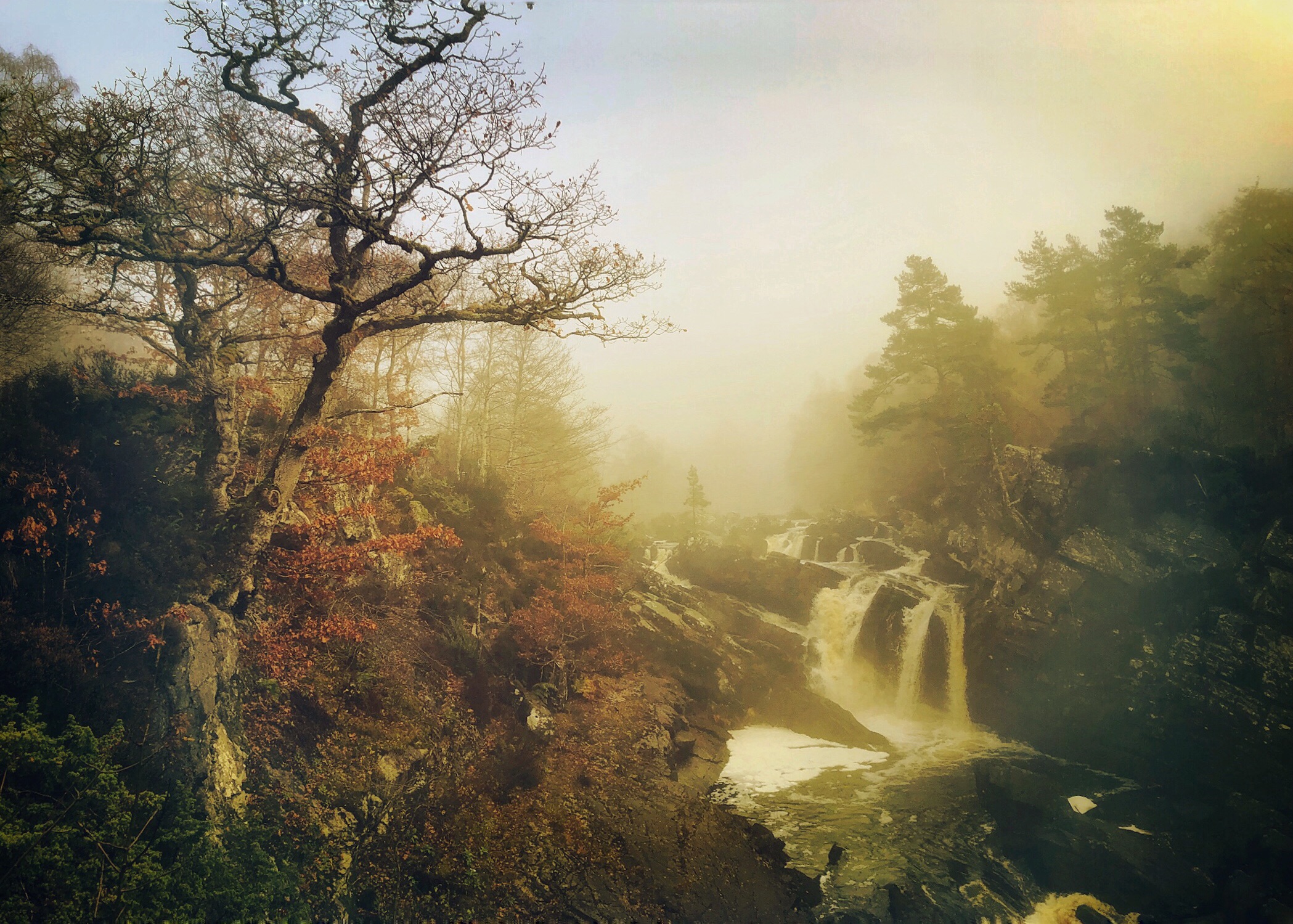
There can be advantages of low cloud, fog, mist and other visibility restricting weather. The low cloud here adds a wonderful sense of ‘other-worldliness’ to this scene. Having been back at to this spot in other seasons, I feel I caught something here quite unique, as—lovely as the location is—I’ve never quite seen again set with such breath-taking mystery. As a severe sufferer of Vertigo, this image represents a considerable act of bravery, taken as it was from a small footbridge, about 100 yards above a sheer drop.
BW: Do you find yourself returning to the same locations? I see that you visited Wescoe Hill for a similar view in 2012, and four years later in 2016.
CH: Yes, on reflection I think I do, but it’s often for different reasons. Sometimes I’m simply not happy with the way an image worked out, and I want to try again. Sometimes it’ll be simply to stand in the same place and point the camera in a slightly different location, or perhaps to catch a scene in a different season. This is mostly if I’ve made an image during the summer (my least favorite photographic season) and consider that the scene would be better presented in a more varied palette. With ‘Wescoe Hill’ it was more that the original image was worked and presented in square format, and in an earlier part of my development. I wanted to try a different format, a different season, but yet to see if the image still had the same impact for me. As it happens, I prefer the earlier version still [shown immediately below].
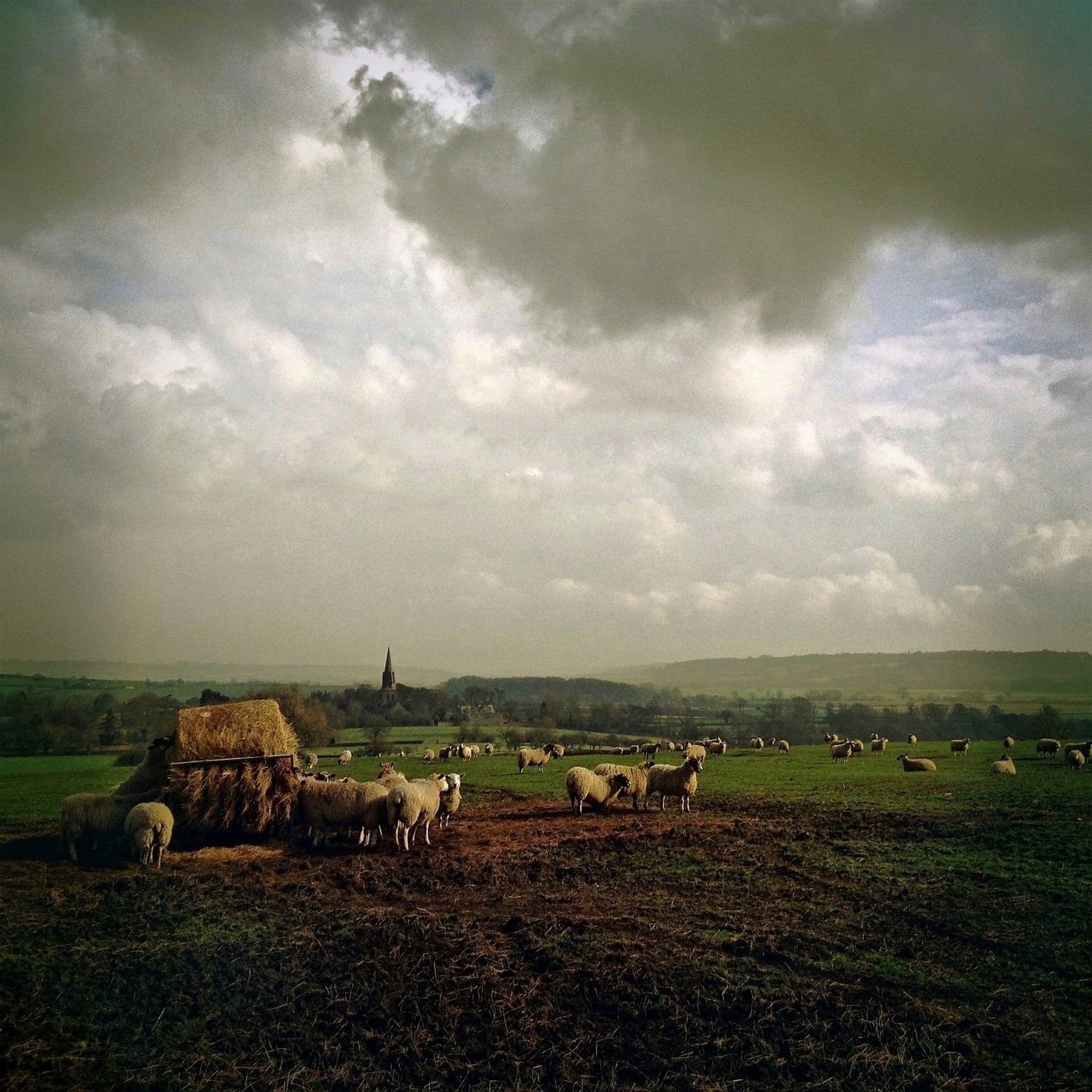
I think this may be only location I’ve made a picture of twice—both with the same view, both featuring the same elements – and left both images in my Gallery. I love both pictures, and whilst this is perhaps the best on a compositional level, the first is an image that sits close to my heart. Wescoe Hill is not, to my knowledge a ‘famous’ view, or considered locally as a beauty spot, but I feel it is a perfect summation of the area I live in—the Wharedale Valley in West Yorkshire. There is more than a touch of Constable here, particularly with the punctuation of the distant church spire. But this is a Northern English image, and I feel could only have been made by a Northern Englishman.
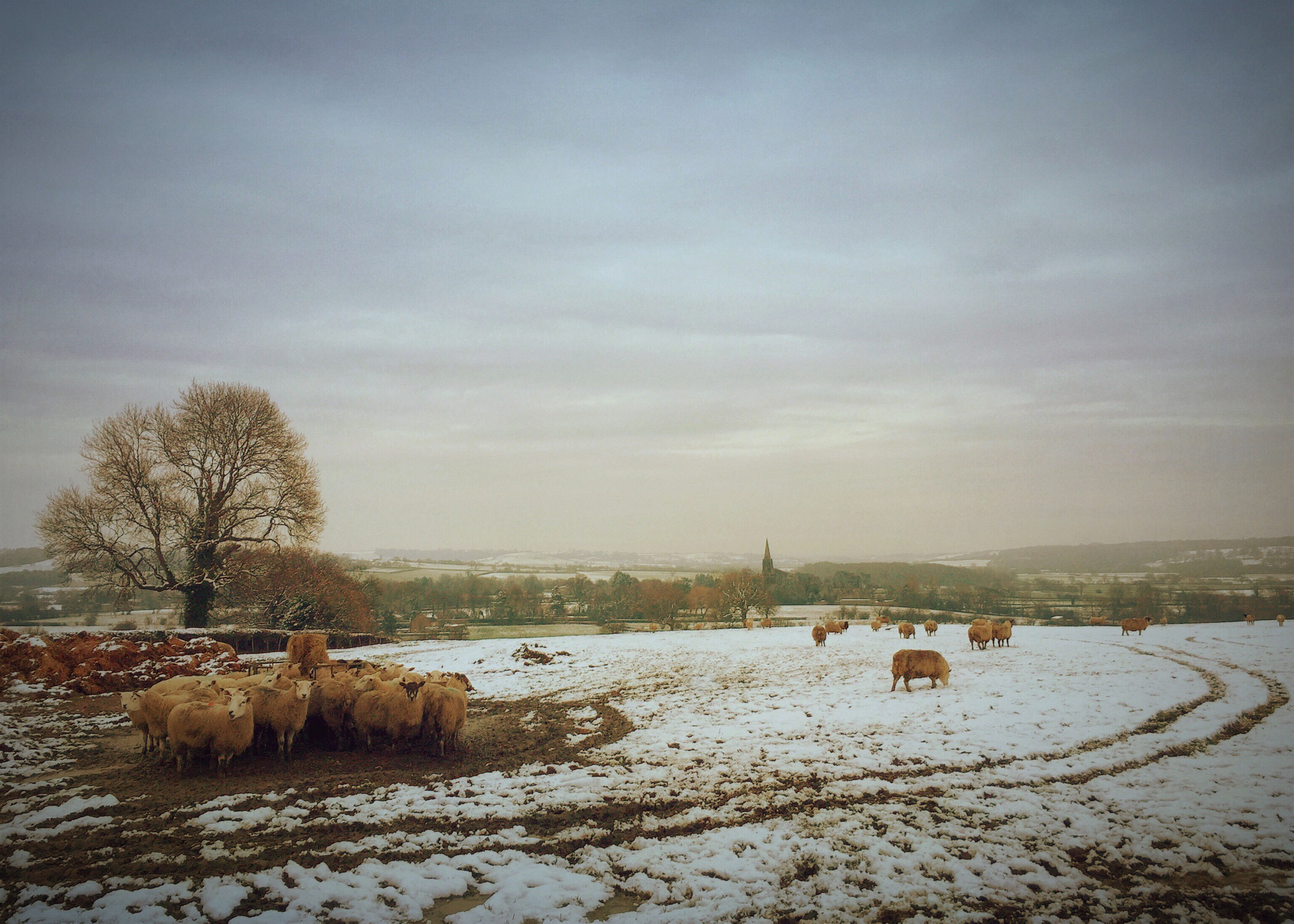
BW: Can you tell us a little about your creative process?
CH: I think each picture I take, on reflection can be months in the making. Not in terms of taking the picture or working it, but more so the planning and ‘pre-thought’ that goes into putting myself into that location at that time. I’ll intensively research the area I’m visiting extensively before getting anywhere near being there. That will mean first studying Ordnance Survey maps for points of interest, historical features, viewpoints, and to have a general ‘overview’ of the area. Then I’ll often Google Map the area and ‘drive’ the route I intend to take, mile by miles, then I’ll do it backwards. This can often tip me off to certain aspects of the way the landscape actually fits together and ‘feels’. This is maybe the most exhaustive part of my preparation – but the most rewarding and it’s been responsible for many of what I believe are my best images. Then finally I will check the area for existing photographic content. Anything I can find, amateur, professional – anything that helps me build a more comprehensive understanding of the area. I believe that this is absolutely essential for landscape work. I’ll also then plan the visit, day by day, time by time and check light direction at any location at the time I intend to be passing, to make sure I am the best chance of having the light the way I want it for the subject I’m interested in.
I’ll follow my route with the intention of hitting each location as close to the time I’d intended as I can, but for all of that planning, the most important thing is to be prepared to throw it all out of the window and react quickly to the unexpected – a sudden atmospheric change, or exceptional weather, or quite simply a view that for whatever reason comes to surprise you. Animals also can make an unexpected entrance, and completely change the dynamic of a planned image.
It’s the great feature of an iPhone. Pop it in your pocket and be prepared to stop at any point if something occurs that you know will be transitory. You’re always ready.
I’ll shoot a LOT of frames in any location. Often using Hipstamatic first, with one or two different settings, then Classic Toy (color and B&W) and then the iPhone native camera. I often find that ONE of these options will give me the feeling I’m looking for. At the end of each shooting day, I’ll go through all the frames I’ve taken that day and discard anything I don’t need – hopefully ending up with two or three of the best from each location. Hard to say what it is that makes the ‘cut’, but it’s always an instinctive thing for me.
Once the shoot or trip is over, I’ll often leave the images for a couple of weeks and let the experience distil, then have another intensive review of the images I’ve kept and make my final cut. By this point I’ll know, more or less, how I’m wanting the final image to look, to feel – and then I begin the process of editing to get it as close to that mental image as I can.
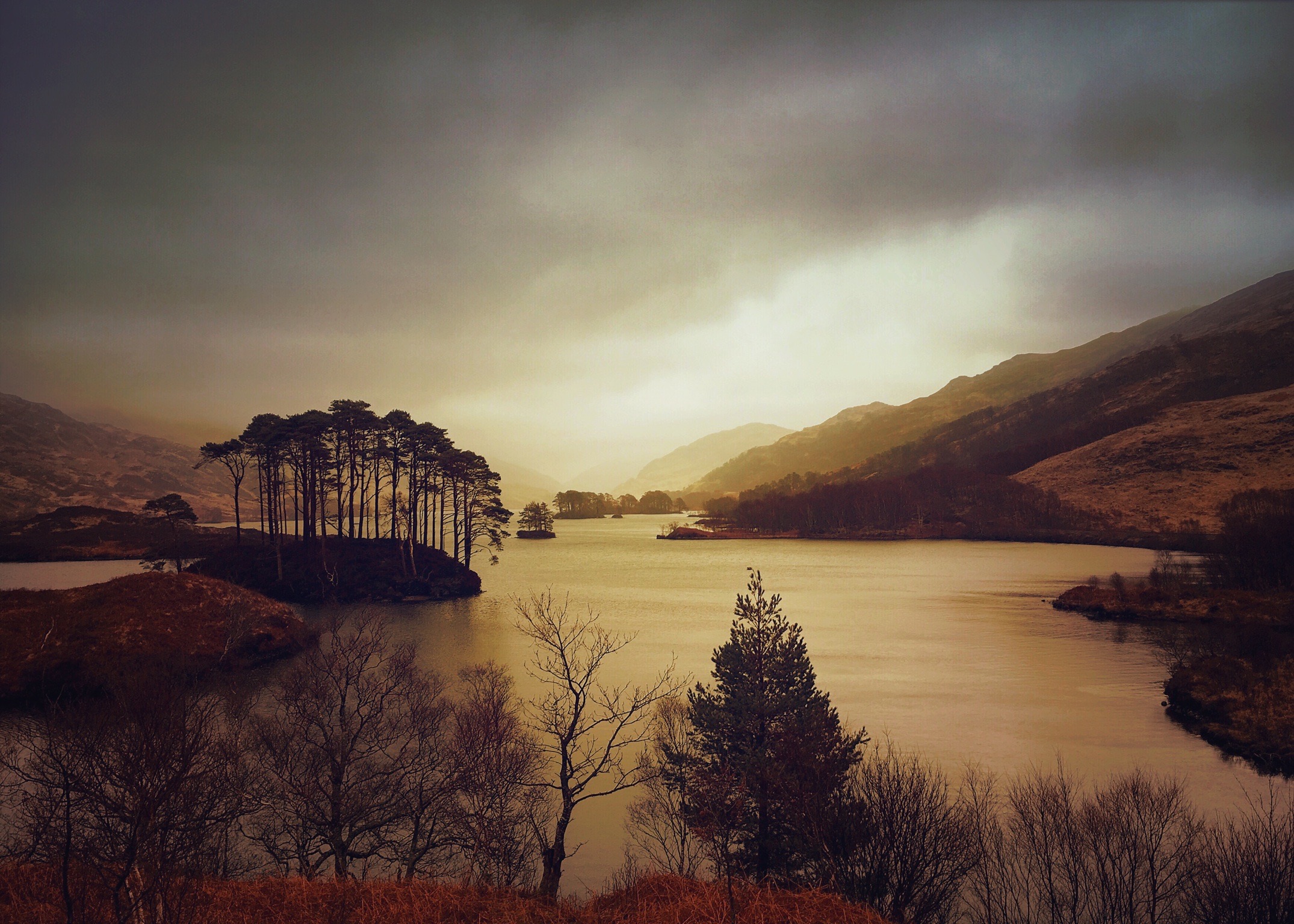
I possibly broke the law to make this one, as the only way I seemed to be able to get the view I wanted was to walk up the West Highland railways line that runs between Fort William and Mallaig. Only a few hundred yards, but still….
I’d checked the train timetable carefully before planning the shot – the weather was awful this day. Black sheets of rain almost all day. In the end I think it only added to the sense of atmosphere as I find it hard to think of this view on a clear sunny day in summer. The island to the lower left was used in a Harry Potter film as the resting place of Dumbledore.
[Tech info for those interested: iPhone 6s, Hipstamatic 311 “camera,” f/2.2, 4.2 mm, 1/163 sec, ISO 25, edited with Snapseed 2.5.4211]
BW: How has your work evolved over the years?
CH: I think mainly on two tracks: firstly – a more definite idea of what it is I want to make pictures of. When I began making pictures, I was trying everything – architecture, portrait, abstract… but as time went on it was landscape that seemed to ‘call’ me…probably because of the way I’d always felt about it since I was a little boy, and also it just seemed to be the thing that I felt most naturally able to do. And over the years I think one becomes more able to see a particular landscape and know if it is or isn’t something I can make a picture of, or would wish to. That’s the result of many thousands of wasted images on scenes that I was convinced would make great pictures, but came away utterly flat when I saw what came back as an image. I think, on the reverse, one becomes highly attuned to locations and atmospheric conditions that will yield very good images much quicker, and are able to ‘pre-visualize’ the end result before even taking the image.
The other track, is of course technology. I started with an iPhone 3, and now am on – what – an iPhone 12? The steps technology has taken in the field of mobile phone camera has been huge, and with each step, one’s ambition rises accordingly. The ‘big leap’ for me was when I moved my photo processing to the iPad Pro – the bigger space to work with was a revelation to me and – I think – helped me a little to avoid ‘over-processing’ an image.
But mainly, I’d have to say that with landscape images, with a mobile phone camera, one has to learn ‘in the field.’
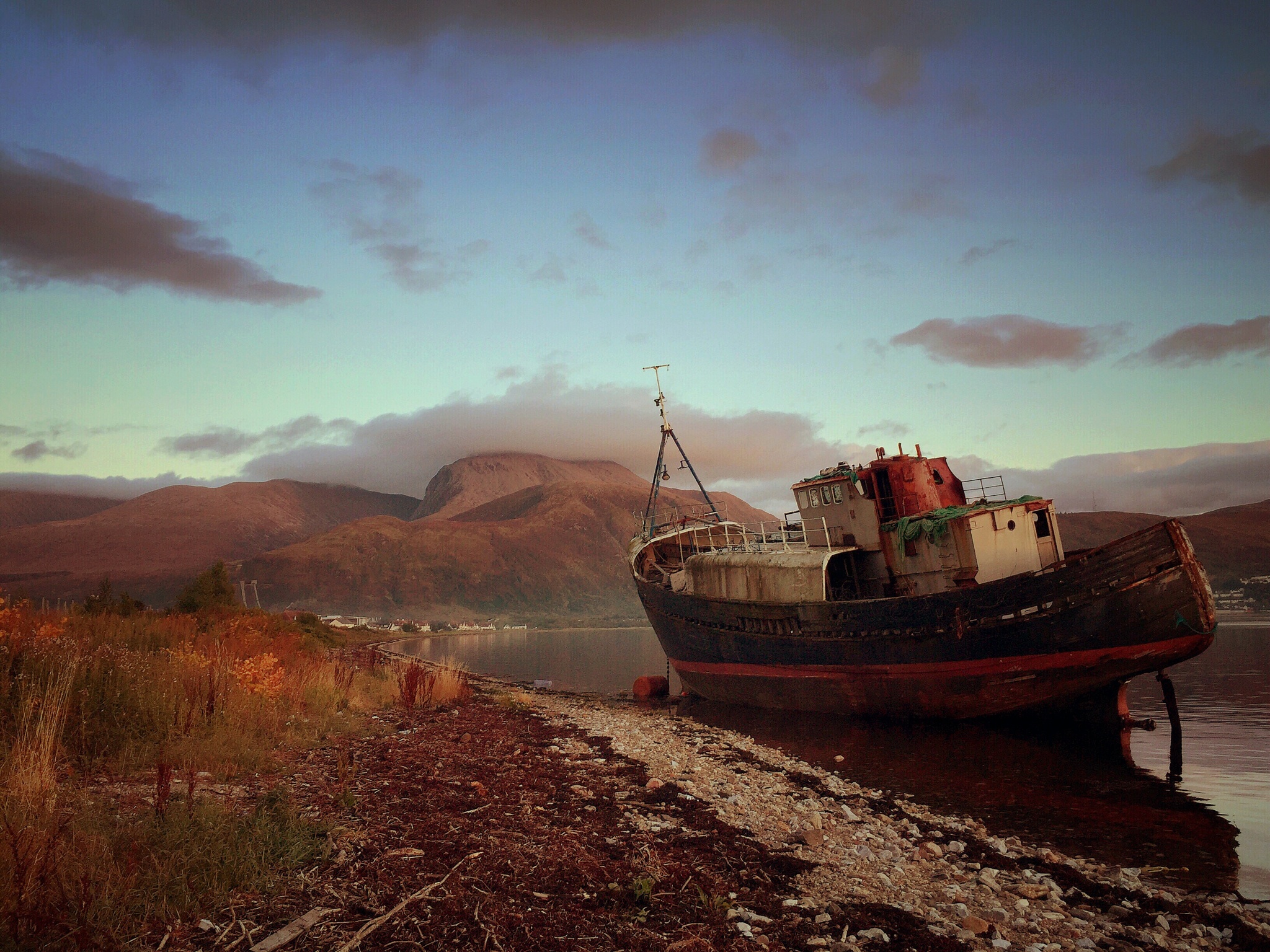
Probably the most ‘important’ (to me) of ALL of my Scottish images. I’d resisted going to Scotland to make pictures for a long, long time. Unfamiliar with so much of the country and still uncertain of my abilities as a landscapist, I’d stuck to closer and more familiar locations. That changed when I saw an image of this old wreck on Flicker by a photographer from York called David Hulme. Seeing it, I knew I HAD to go, and knew that I now had my first confirmed location. The wreck is well known and well photographed, but I loved it from the moment I saw it, and every time I pass the site, I will always stop to see it again, to see if time has degraded it further, to also to pay my respects to a subject that changed my horizon forever.
BW: What iPhone apps do you use in your work? What iPhone or iPad apps and/or desktop apps do you use in your work? It looks as though you started with Hipstamatic and square format, and have moved away from that to wider formats and Classic Toy (as of 2015). Does that continue to be your approach?
CH: For shooting, always Hipstamatic (for color), Classic Toy (some color, some B&W) and the iPhone native camera.
For processing only now, I only use Snapseed and Stackables. [Note: Stackables is no longer available for download on the App Store, although previously downloaded versions still work on iPads and iPhones].
I do still enjoy certain scenes in a square format but it’s really very occasional now, and very much governed by the subject – I know there are some landscapists who use square all the time. For landscape, but I feel it’s just often too restrictive. I think when an image as a defined subject (let’s say a Castle, or a boat, or an animal) then square can work wonderfully well, and focus the eye beautifully on the subject – but in attempting to portray a more sweeping view, I need other options. It would be very hard to imagine some of the Scottish locations I’ve made images of more recently being more effectively represented in a square format. The great landscape painters rarely used a square format, and there is a reason.
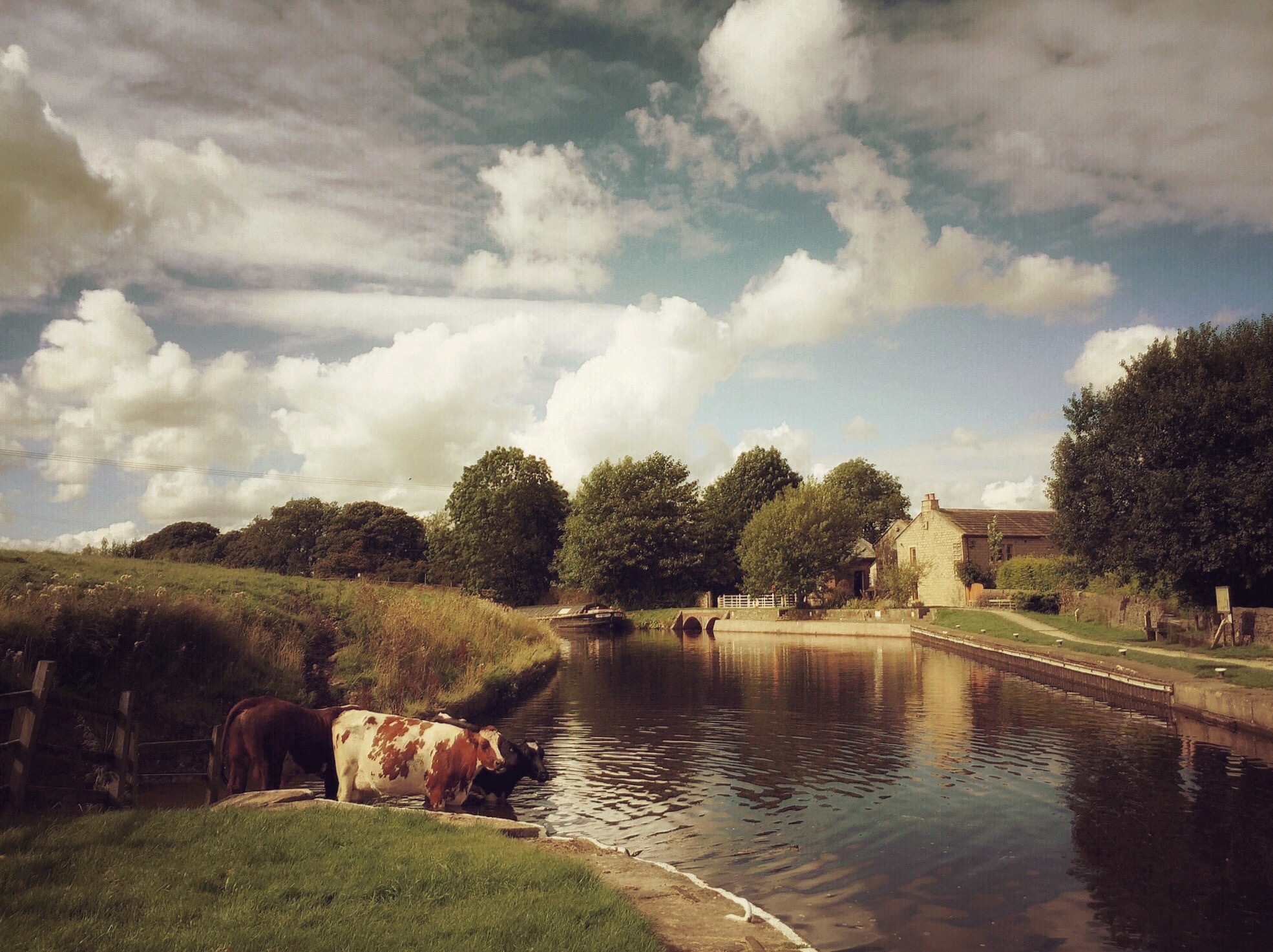
An image that still makes me laugh every time I see it. Nothing to do with the picture itself, but just how very ‘Constable’ it looks. More Dutch I think, but the link is plain to see. Totally unplanned, this was taken whilst taking a breath of air when visiting a family member who lived in the area. The locks are certainly pleasant enough as a subject, but I saw the cattle approaching to drink and very quickly composed the shot in my head, in terms of my viewpoint. Then it was simply a question of waiting for the cattle to arrive and gather in a suitable place. A photograph that would be inconceivable in square format, this Classic Toy image was only very lightly ‘worked’. I love the image and I’m still very, very proud of it.
BW: In a reply to a comment under an image of yours on Flickr, you wrote: “If the iPhone is my sketchbook, then the iPad is the palette.” Can you elaborate? And did you ever upgrade to an iPad Pro and Apple pencil?
CH: I’d be sunk without my iPad Pro. It’s as important to me as my iPhone in regards to making pictures, The Pencil I tried and quickly disliked.
I think what I was and am saying about using the phone is that it is a remarkable piece of kit for making the shot, its sheer transportability, its better battery life and the now much increase storage mean that it really is ideal for me. But I never, ever linger over a scene looking for a perfect shot that would require no editing. I always take an image with a view to what it can be, rather than what it is. I appreciate that that isn’t the case for all, many or even most landscape photographers – but I’m not a photographer, I make pictures. So, I want to be as free and flexible to think and act quickly with my phone. The number of times I’ve been able to capture a scene under conditions that are highly transitory because I have my phone in my pocket are innumerable. So, in essence each image is an accomplished sketch, and when I see what I have I’ll immediately begin the mental process of how to present the scene in its finished form.
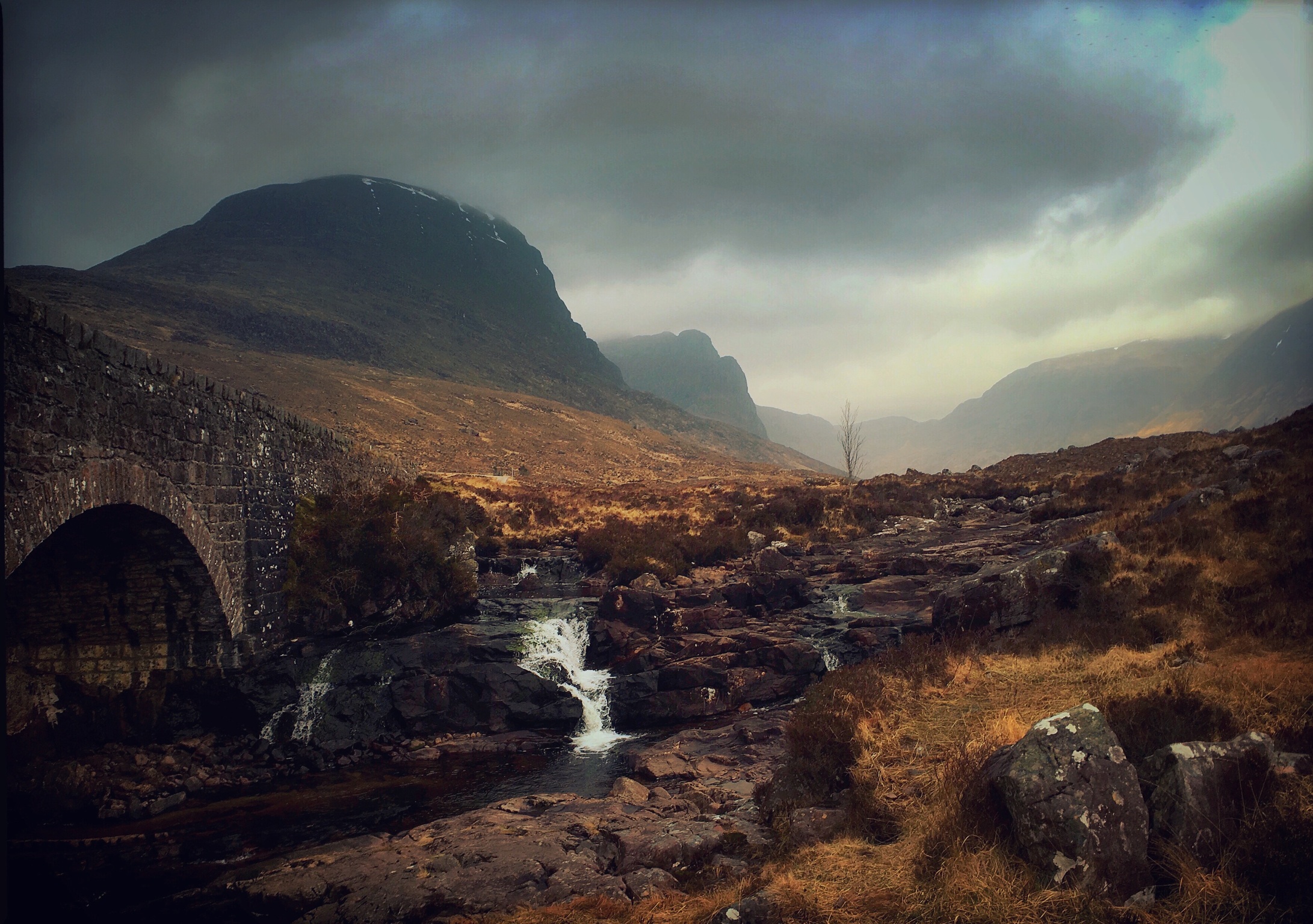
The road leading up to the Applecross Peninsula in Wester Ross is famous for one of the most spectacular road passes in the UK, the ‘Bealachna Ba’ – but when researching my journey on Google earth it was this view that interested me most, and I’d planned this image long before I ever stepped foot in the area. The key was to present the various elements; Bridge, Small waterfall, stream and foreground rock in a way that threw the viewer back upon the main event – the foreboding mountains at the rear. This area of Scotland is full of such incredible scenery, and offers the landscapist opportunity after opportunity to create this kind of image. My favorite element is the bare, sole sapling in the images center. Almost removed as I was editing the image, I’m so glad I left it in.
BW: What kinds of creative patterns, routines or rituals do you have?
CH: I think much of this is really covered in the above – but the only addition I can make to this is that generally now my photographic trips are more planned ahead, rather than taken on the fly, with the time and planning set aside just for that endeavor. Early on in my photo making days, I’d take a more ‘on the fly’ approach, shooting in a much more instant style… and whilst that did give me a huge education, on reflection, and looking back over those earlier images, it led to a sort of uneven quality in the collection of my images. In maybe the past five years, I’ve been much more measured and considered into what I want to make a picture of, planned for it much more intensively and simply made less pictures, yet achieved a great consistency of style and substance.
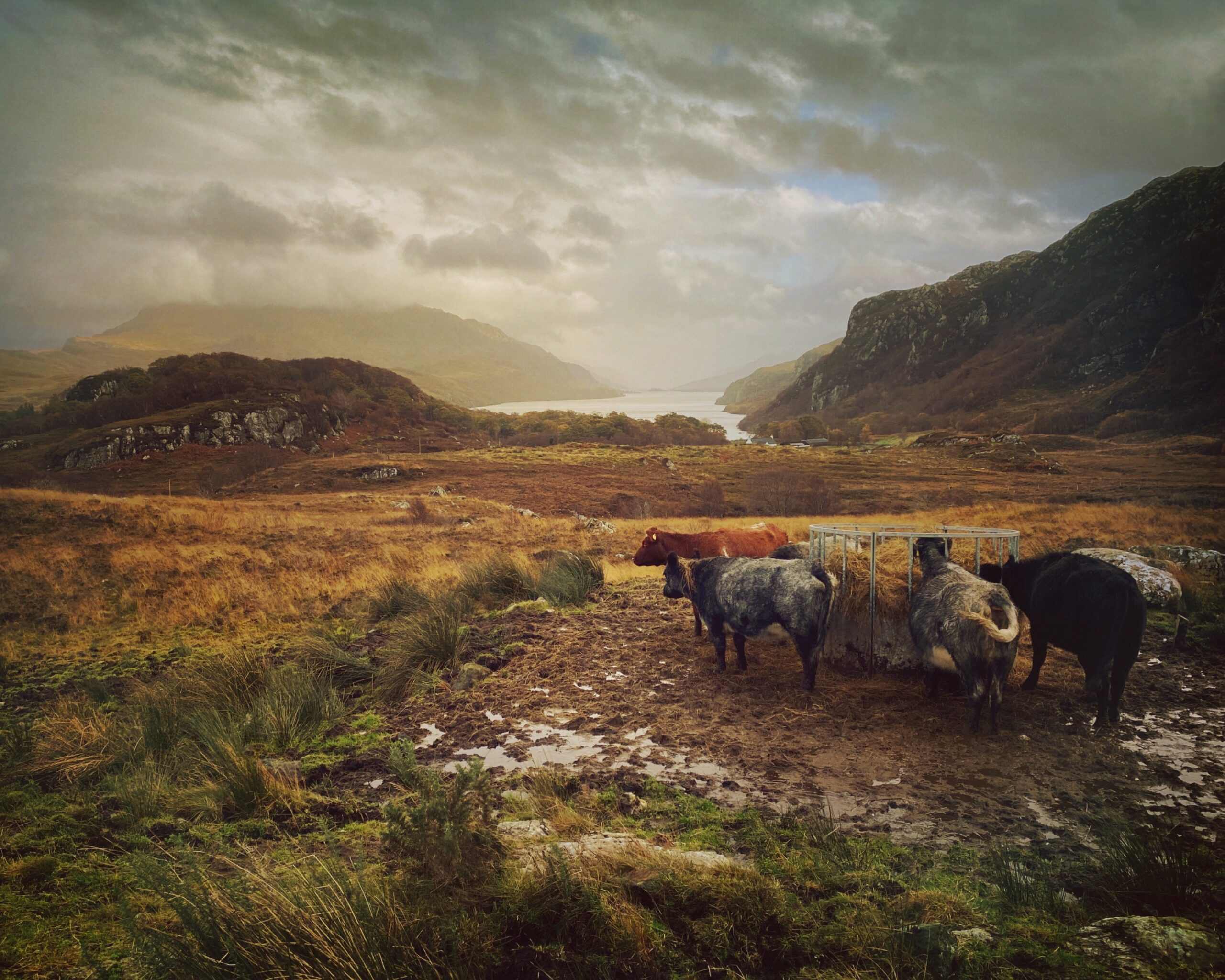
A perfect example of an unexpected opportunity. Taking my drive back to Inverness airport, I had an unexpected 2/3 hours to kill, so took a diversion on my route, to re-visit the Wester Ross area, taking the road ‘in reverse’ to the last journey I took there. I’d photographed this view before, but not been happy with a single frame. Again, it was summer, and the conditions simply didn’t meet my inner vision of the view. Passing the spot, and seeing the cattle begin to feed, I sensed this was the perfect tweak to the scene – and the light just happened to be in the right place. Much inspired in processing by Dutch landscapists of the 17th century.
BW: What advice would you have for someone aspiring to do landscape photography?
CH: Go with the heart over the head.
Decide what it is you want to do before you do it. If you know what you’re really looking to achieve, then it’s only a question of eventually connecting the artistic dots.
Have patience – with the weather, with others, with animals, and with yourself. Patience may be the single greatest attribute for anyone concerned with representing the landscape in any artistic manner.
Plan ahead, do your research, try to familiarize yourself with the terrain before you’ve even been there.
And finally, be prepared to throw ALL of that out of the window, at any point, if you’re lucky enough to find yourself in the right place, at the right time.
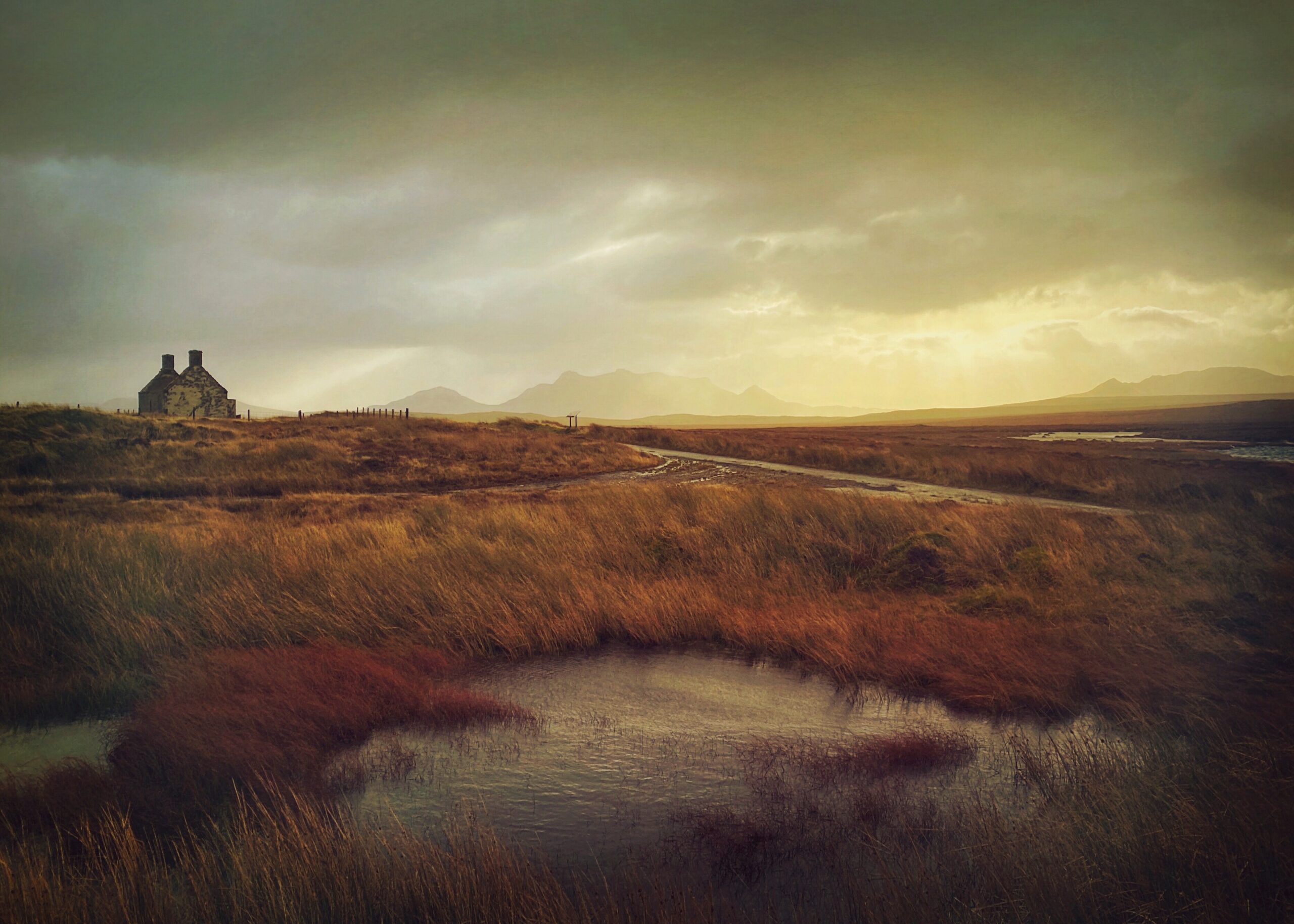
Taken during my second session at this location, the first being in later summer of 2021, and simply not returning an image with the requisite sense of ‘brooding’ I wanted. It’s a well photographed and well-known location (despite its utterly isolated appearance here) and my wish was to try enhance that sense of its place in the expansive landscape it inhabits.
CHRIS HARLAND
ABOUT THE INTERVIEWER
Bob Weil is a former marketing exec and practicing mixed media digital pictorialist living in Omaha, Nebraska. He has won numerous awards for his work and has exhibited in New York, Los Angeles, Canada, Italy and Portugal. He is a published author and teacher on digital art subjects with 2,400 students in 52 countries. Bob co-authored The Art of iPhone Photography with Nicki Fitz-Gerald for Rocky Nook Photography Books.





Diana Nicholette Jeon
March 26, 2022 at 19:28
I’ve been a phone shooter since before the iPhone and apps, and “in the community” to some degree (more in the past than I have the last few years) since around 2013. This photographer was one I did not know. Thanks for introducing me to someone new. FABULOUS work, @chrisharland.
Bob Weil
March 27, 2022 at 21:53
Thank you, Diana! It’s always a pleasure to introduce new photographers to those in our small community of iPhoneographers, and to the larger community of photographers in general found here at Frames! So glad you enjoyed Chris’s work. I’ve been following his landscape photography for more than ten years on Flickr, and his work was selected from time to time for Apps Uncovered.
Howard Russell Hill
March 27, 2022 at 23:29
For several years, I used a mobile phone before getting a camera. The camera information from the mobile photography helped me. I used that information with a better understanding of how to set Aperture, ISO, and Shutter Speed, later on using the camera.
Bob Weil
March 29, 2022 at 02:08
Thanks for the additional commentary, Howard – much appreciated!